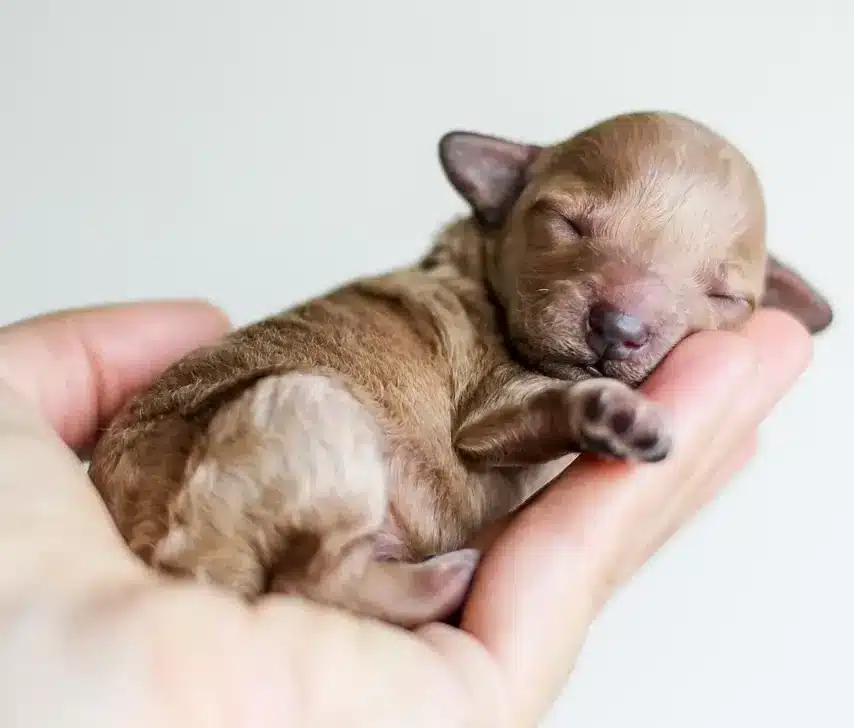Early Neurological Stimulation (ENS) : What it is and the Benefits
ENS Overview
As a pet parent, you want your furry friend to have the best possible start in life. Early neurological stimulation (ENS) is a method that can help with just that. ENS involves exposing puppies to different sensory experiences during their first few weeks of life. These experiences are designed to stimulate the nervous system and help puppies develop in a healthy and well-adjusted manner. The benefits of ENS are numerous, including improved immune function, better stress management, and enhanced learning abilities. In this article, we will take a closer look at what ENS is, how it works, and the benefits it can provide for your puppy. Whether you’re a seasoned breeder or a new pet parent, understanding ENS is an essential part of giving your furry friend the best possible start in life.
Early neurological stimulation (ENS) is a series of exercises that are designed to stimulate a puppy’s developing nervous system during the first few weeks of life. These exercises were first developed by the US military to improve the performance of their working dogs. The exercises are simple and non-invasive, but they have been shown to have a profound impact on a puppy’s development.
The exercises involve subjecting the puppies to different stimuli to stimulate their senses. These stimuli include things like cold surfaces, light touches, and mild stressors. The puppies are subjected to these stimuli for short periods, usually just a few seconds, several times a day.
The idea behind ENS is that by exposing the puppies to these different stimuli, their nervous systems will develop in a way that makes them more resilient and better able to handle stress later in life. It is thought that by exposing the puppies to these stimuli during their critical period of development, their brains will be wired in a way that makes them less reactive to stress and more adaptable to new environments.

The Benefits of Early Neurological Stimulation
The benefits of early neurological stimulation are numerous and significant. Studies have shown that puppies who undergo ENS are healthier, more resilient, and better able to handle stress than those who do not. Here are some of the key benefits of ENS:
Improved Immune Function
One of the most significant benefits of ENS is improved immune function. Studies have shown that puppies who undergo ENS have stronger immune systems than those who do not. This is thought to be because ENS stimulates the production of stress hormones, which in turn stimulates the immune system. Puppies who undergo ENS are better able to fight off infections and diseases, which can be especially important during their first few weeks of life when they are most vulnerable.
Better Stress Management
Another significant benefit of ENS is better stress management. Puppies who undergo ENS are better able to handle stress than those who do not. This is thought to be because ENS helps to desensitize the puppies to stress. By subjecting the puppies to mild stressors during their critical period of development, their brains are wired in a way that makes them less reactive to stress later in life. This can be especially important for puppies who will be working dogs or who will be exposed to stressful environments later in life.
Enhanced Learning Abilities
Puppies who undergo ENS also have enhanced learning abilities. This is thought to be because ENS stimulates the growth of new nerve cells in the brain. These new nerve cells are thought to be responsible for enhanced learning and memory. Puppies who undergo ENS are better able to learn new things and retain information than those who do not.
How Early Neurological Stimulation Works
Early neurological stimulation works by subjecting the puppies to different stimuli during their critical period of development. The critical period of development is the first few weeks of life when the puppies’ brains are developing rapidly. During this time, the puppies are extremely sensitive to their environment and can be easily influenced by external stimuli.
The exercises involved in ENS are designed to stimulate the puppies’ senses and expose them to different stimuli. These stimuli include things like cold surfaces, light touches, and mild stressors. The puppies are subjected to these stimuli for short periods, usually just a few seconds, once per day.
The idea behind ENS is that by subjecting the puppies to these different stimuli, their brains will develop in a way that makes them more resilient and better able to handle stress later in life. It is thought that by exposing the puppies to these stimuli during their critical period of development, their brains will be wired in a way that makes them less reactive to stress and more adaptable to new environments.
The Importance of Early Neurological Stimulation for Puppies
Early neurological stimulation is extremely important for puppies. The critical period of development is the first few weeks of life when the puppies’ brains are developing rapidly. During this time, the puppies are extremely sensitive to their environment and can be easily influenced by external stimuli.
By subjecting the puppies to different stimuli during their critical period of development, their brains will develop in a way that makes them more resilient and better able to handle stress later in life. This can be especially important for puppies who will be working dogs or who will be exposed to stressful environments later in life.
In addition to the long-term benefits of ENS, there are also short-term benefits. Puppies who undergo ENS are more active, more alert, and more curious than those who do not. They are also more likely to be well-adjusted and confident as they grow older. Golden Retrievers are smart but this is the cherry on top.
Early Neurological Stimulation Exercises
There are several exercises involved in early neurological stimulation. These exercises are simple and non-invasive and can be done easily by pet parents or breeders. Here are some of the exercises involved in ENS:

Tactile Stimulation
Tactile stimulation involves touching the puppies’ paws with a cotton swab or other soft material. This helps to stimulate their sense of touch and helps to desensitize them to handling.

Thermal Stimulation
Thermal stimulation involves exposing the puppies to different temperatures. This can be done by placing the puppies on a warm surface or a cold surface for a few seconds. This helps to stimulate their sense of temperature and helps to desensitize them to different temperatures.
Head Held Up
Head held up involves holding the puppies’ head up for a few seconds. This helps to stimulate their sense of balance and helps to desensitize them to being in different positions.

Head Down
Head down involves holding the puppies’ heads down for short periods. This helps to stimulate their sense of balance and helps to desensitize them to being in different positions.

Supine Position
The supine position involves placing the puppies on their back for short periods. This helps to stimulate their sense of touch and helps to desensitize them to being in different positions.
Implementing Early Neurological Stimulation in Your Puppy’s Routine
Implementing early neurological stimulation in your puppy’s routine is easy and can be done by pet parents or breeders. The exercises involved in ENS are simple and non-invasive and can be done in just a few minutes each day. Here are some tips for implementing ENS in your puppy’s routine:
Start Early
It’s important to start ENS as early as possible. The critical period of development is the first few weeks of life when the puppies’ brains are developing rapidly. By starting ENS early, you can ensure that your puppy gets the maximum benefit.
Be Consistent
Consistency is key when it comes to ENS. The exercises should be done once per day, every day, for the first few weeks of the puppy’s life. This will ensure that the puppy gets the maximum benefit from the exercises.
Be Gentle
The exercises involved in ENS should be done gently and with care. The puppies are fragile during their first few weeks of life, and it’s important to handle them gently to avoid injury.
Monitor Your Puppy’s Progress
It’s important to monitor your puppy’s progress and adjust the exercises as needed. If your puppy seems uncomfortable or distressed during the exercises, you may need to adjust the intensity or duration of the exercises.
Common Misconceptions About Early Neurological Stimulation
There are several common misconceptions about early neurological stimulation. Here are some of the most common:
Is ENS painful?
ENS is not painful for the puppies. The exercises involved in ENS are simple and non-invasive and are designed to be gentle and stress-free for the puppies.
Is ENS for working dogs only?
ENS is beneficial for all puppies, not just working dogs. The exercises involved in ENS can help puppies develop in a healthy and well-adjusted manner, regardless of their future career or lifestyle.
Risks and Precautions to Consider
While ENS is generally safe and non-invasive, there are some risks and precautions to consider. Here are some things to keep in mind when implementing ENS:
Avoid Overstimulation
It’s important to avoid overstimulating the puppies during the exercises. Overstimulation can cause stress and anxiety, which can be harmful to the puppies.
Monitor Your Puppy’s Progress
It’s important to monitor your puppy’s progress and adjust the exercises as needed. If your puppy seems uncomfortable or distressed during the exercises, you may need to adjust the intensity or duration of the exercises.
Consult Your Veterinarian
If you have any concerns about your puppy’s health or development, it’s important to consult your veterinarian. Your veterinarian can guide the best practices for implementing ENS and can help you monitor your puppy’s progress.
Conclusion
Early neurological stimulation is a simple and non-invasive method for helping puppies develop in a healthy and well-adjusted manner. The exercises involved in ENS are designed to stimulate the puppies’ senses and help them develop a more resilient nervous system. The benefits of ENS are numerous and significant, including improved immune function, better stress management, and enhanced learning abilities. Whether you’re a seasoned breeder or a new pet parent, understanding ENS is an essential part of giving your furry friend the best possible start in life.
Check out this study on The Effect of Early Neurological Stimulation on Puppy Welfare, by the National Library of Medicine
Breeder’s Testimony on Early Neurological Stimulation
We have learned firsthand how important early neurological stimulation is in the early stages of the puppy’s life. We believe that has greatly improved their social skills and gives them a head start in learning to love and trust their human companions. Now that we have seen the improvement it has made, we incorporate ENS with all our litters. The Golden Retrievers and Goldendoodle Puppies we raise will have completed the Super Dog Program (ENS) by 2 weeks of age.
Reserving an Early Neurological Stimulated Puppy
Now that you know all about Early Neurological Stimulation, would you like to get a puppy of your own? If so, why wait? What to dive in and learn about Golden Retrievers? There are many reasons but adopting a puppy from a good breeder makes a good thing even better.
Golden Crest Retrievers has implemented Early Neurological Stimulation into our program and we have helped many Golden Retriever lovers and first-time Golden Retriever owners find their next furry friend, and we’d love to help you, too. Our team can assist you in finding the right puppy by completing our Puppy Application and we will be in touch soon.
You Might be Interested in These Articles.
Do Golden Retriever puppies change color?
